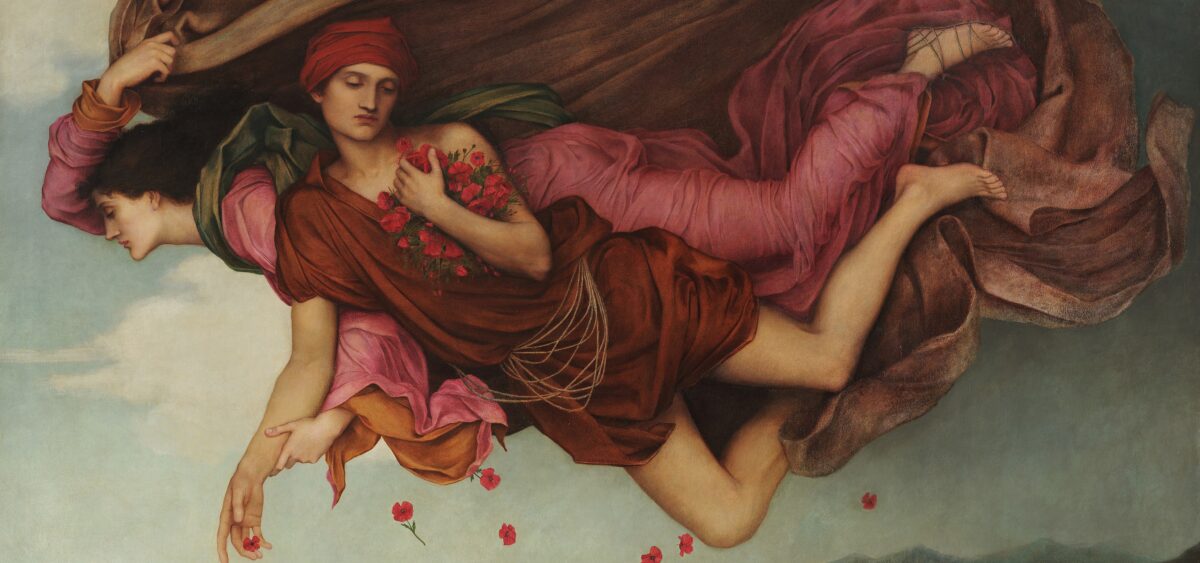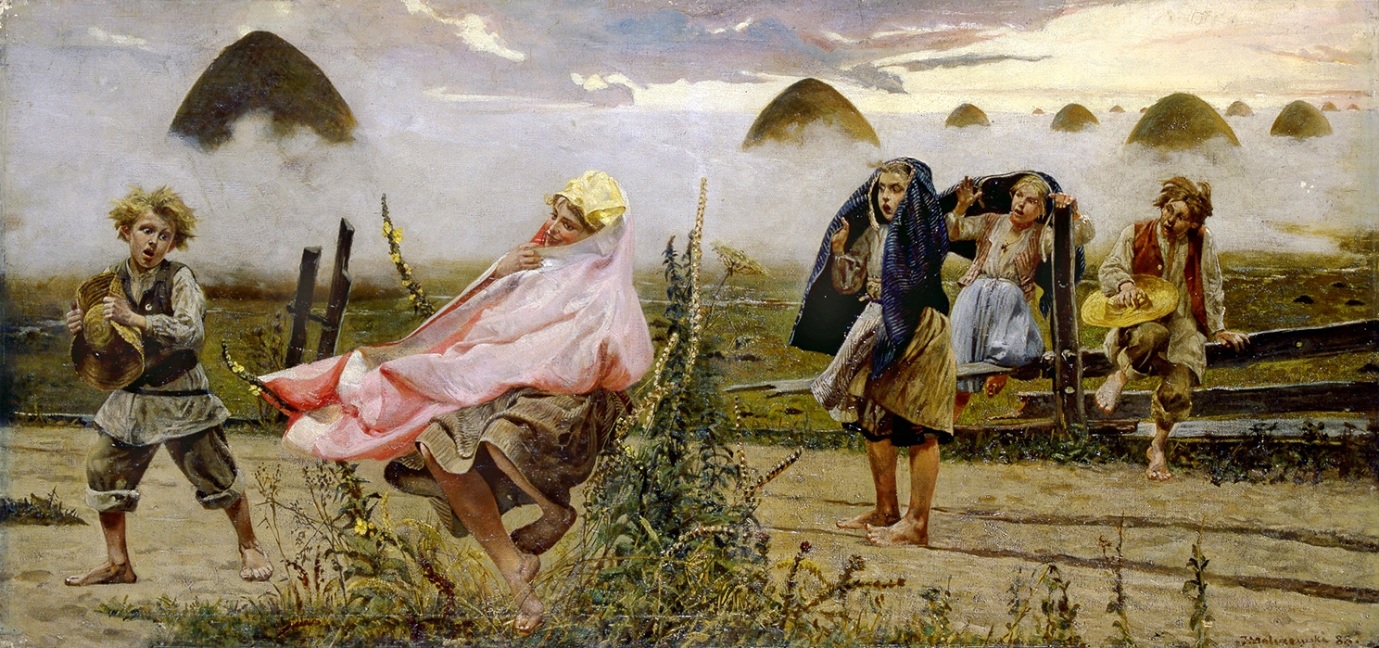
The belief that dreams are meaningful is as old as humankind itself. People from different cultural backgrounds are striving to grasp their message and recounting their content was (and remains) a vital ritual in many parts of the world.
Twice a year, the white-crowned sparrow sets out on a long journey, traveling from Alaska to northern Mexico in the autumn and completing the return leg in the spring. Many birds migrate (and some cover even longer distances than the above)—yet it was the white-crowned sparrow that attracted the attention of both the U.S. Department of Defense and Jonathan Crary. The writer and art critic noted that when in flight this little gray bird can go without sleep for up to seven consecutive days. It flies during the day and forages for food at night. Perfect efficiency, unhampered by sleep breaks. The U.S. Department of Defense spent a handsome sum of money to find out how the white-crowned sparrow can stay awake for so long. Crucially, the study was not undertaken for the sake of science alone. Research into the bird’s brain activity was to assist in the development of new ways to maintain productivity among American troops for days on end—without them needing to sleep.
A Restricted Good
However, a soldier who is able to go without sleep is just the first step. In his book 24/7: Late Capitalism and the Ends of Sleep, Crary cautions that “24/7 is a time of indifference, against which the fragility of human life is increasingly inadequate and within which sleep has no necessity or inevitability. In relation to labour, it renders plausible, even normal, the idea of working without pause, without limits.” In a culture driven by productivity, sleeping serves no purpose. It is a biologically-enforced pause in shopping, consuming, and the accumulation of things and experiences. It offers sanctuary from artificially-stimulated desires and the—tinged with bitterness yet slightly vague—feeling that these desires can never be satisfied. Crary argues that sleep is today one of the few human needs which remains unfettered by the profitability machine. Thirst, hunger, sexual desire, even the need for friendship, have already been colonized by the market. Sleep alone has managed to stand its ground and remain what it is: a natural human need, calling out to be satisfied night after night. But perhaps Crary is being too optimistic here, for it might not actually be the case after all.
Workshops designed for companies seeking to ensure their employees follow healthy sleep patterns are advertised with slogans that might include: “Better sleep means better business!” “A well-slept workforce reaps tangible benefits!” “It pays to look after the health of your staff.” Then there are messages for the employees themselves, which might look like: “Poor sleep can ruin your career,” “Find out more about successful people’s sleeping patterns,” “Elon Musk gets six hours of sleep. How about you?” Sleep coaches promise better and more healthy sleep. After all, everyone likes the feeling of getting a good night’s rest. In the capitalist mindset, however, sleep is nothing more than a means—the end is greater efficiency, creativity, and resilience. Sleepers—or rather non-sleepers—are responsible for their own rest.
If one wishes to be successful in their attempts to protect sleep from the designs of those seeking to profit from it, it may be a good idea to recognize there is more to sleep than rest and, consequently, increased productivity at work. It is more than just a biological activity—it is also a cultural phenomenon.
There Is More to See at Night
Oneiric visions, phantoms, hallucinations, ghouls, nightmares, apparitions. Recurrent or appearing as a one-off. Dreams both benevolent and ominous. Nights when the dead visit their loved ones to offer comfort—and, occasionally, warning or instruction. Dream visions, through which adivine force reveals what it has in store for humans and the world. Dreams have always been an instrument of power. Historians have described Babylonian kings and Egyptian pharaohs to whom deities conveyed important messages in dreams: whether to start a war, what taxes to levy, who to appoint as a successor. In ancient Greece, augural dreams were also available to people from outside the ruling class. In the temple of Asclepius, the ailing individual would fall asleep after a period of ritual fasting and a bath. On the following morning, they would recount their dream to the priests, who would explain the symbolism and decide what treatment was required.
From time immemorial, people have endeavored to bring the hidden meaning of dreams to light. Russian Slavicist Nikita Ilyich Tolstoy believed that, since there are no tribes or nations without religion, so too are there no ethnic groups that have not tried to explain dreams. Historian of religion Mircea Eliade stressed that, for many tribes, dream analysis and elucidation is a cultural practice.
Belief in the divine origin and prophetic meaning of dreams features prominently in the Old Testament, which includes as many as thirty-seven descriptions of dreams regarded as prophecies from the gods. One example is the well-known story of the pharaoh who had a vision in his sleep and felt oddly anxious upon waking. He immediately summoned all the sages and augurs to his court in order to recount what happened. In the dream, the pharaoh was standing on the bank of the Nile and looking at the calm surface of the water. Suddenly, seven fine, fat cows emerged out of the river and began to graze in the bulrush. After a while, another seven cows emerged. They were thin, ugly, and they turned out to be voracious. The beautiful fat cows disappeared in the entrails of the other creatures. The same night, the pharaoh had another dream which made him even more anxious. Seven beautiful, healthy ears grew out of one stalk. Later, seven empty and wind-beaten stalks appeared and engulfed the healthy ones. None of the augurs was able to decode the mysterious symbolism of these dreams. Only Joseph, son of Jacob and Rachel and an Old Testament patriarch, was successful. The pharaoh learned that seven years of good crops lay ahead for his kingdom, followed by seven years of bad crops and hunger across the world. The monarch accepted Joseph’s suggestion that food should be stockpiled in preparation for the difficult times ahead.
The pharaoh’s dream of the seven fat and seven thin cows is a model example of a prognostic dream, preceding real-life events. However, its interpretation is not limited to predicting the future. It is also—perhaps primarily—meant to shape future events. Rather than give in to the bleak vision of the coming years, the pharaoh takes action in order to alter the course of history.
Dream Interpreters
Dreams were meant to help make sense of the world and predict the future; often, they were pragmatic in nature. Handzia, a character in Edward Redliński’s novel Konopielka, wakes up still engulfed in sleep, sits on the edge of the bed, and begins her story: “’Ave I given the bairns a beatin’ in my sleep, or is someone goin’ to come round?” Handzia returns to wakefulness—she needs to get the house ready, replenish supplies, and be prepared. Handzia’s dream vision translates into reality: not long afterwards, a teacher arrives in the village. She moves into Handzia and her husband Kaziuk’s house, and takes her place at their table. In scholar Stanisława Niebrzegowska’s formulation, a dream such as Handzia’s plays the role of “organizing people’s actions.” It is a kind of signpost, making it easier to navigate the winding road that is reality. All one needs to do is follow the instructions contained therein once awake.
But before a dream vision can influence real life, the mystery conveyed in it needs to be deciphered. The biblical pharaoh would not have stockpiled for the impending famine were it not for Joseph, who explained the meaning of cows fat and thin, and stalks full and empty. In interpreting the dream, Joseph became an intermediary between divine and human power. On the strength of his skill, Joseph became the ruler of Egypt and was granted lifelong special status in the kingdom. Over the centuries, those able to interpret dreams were regarded as exceptionally gifted. Their social standing improved and they were held in high esteem. In traditional communities, explaining dreams was the task of sages or elders, who were often women.
The initiated garnered their knowledge of dreams from their parents and grandparents, as well as from their own experiences and observations. They also referenced books whose popularity has not wavered since the 16th century, published in Persian, Egyptian, Chaldean, Babylonian, Assyrian, and Hebrew. And Old Polish ones, many of them with elaborate titles such as: The Explication of Night Dreams; To the Good-Humored Reader, Designed to Elucidate the Forecast of Seven Planets and Twelve Celestial Bodies in His Mind: In Alphabetical Order, and The New Dream Book for Merriment, Containing Dreams Complete with their Elucidation, in Alphabetical Order. Niebrzegowska, author of Polski Sennik Ludowy [The Polish Folk Dream Book], highlights that aside from written dream books, oral accounts played a significant role in peasant culture. They were passed on from generation to generation, during family get-togethers and conversations. A direct, intimate connection was established between the speaker and the listener. Recounting dreams was regarded as more than simple entertainment, meant to do away with the boredom of winter evenings. Cultural history shows that dreams are much more than individual mental and spiritual phenomena. Even though a dream is unavailable to others while it unfolds, it can become part of social reality, as long as it is shared with the community and other people become involved in the oneiric game.
Who Dreams What
In the 1970s, American anthropologist Gilbert H. Herdt conducted an ethnographic study of the Simbari people, native to Papua New Guinea. He found that members of the tribe believed that while a person is asleep their soul leaves the body and wanders in the afterworld, where it has extraordinary experiences. It floats in the sky, defeats menacing enemies, has sex with people with whom in real life intimate relations would be prohibited. The dreamer bears no responsibility for what the Simbari people call the soul’s night antics. In dreams, it is able to exist outside of culture and its many laws. Dreams are also where the soul meets spirits and forces of a higher order. These are not pleasant encounters, however, as they give spirits the opportunity to demonstrate their hostility towards humans.
Waking up does not mean the dream has come to an end. When the dreamer awakens, their dream is no longer a private matter—as it is recounted, it enters the cultural bloodstream. The Simbari people recount their dreams in a variety of social situations (this does not apply to erotic dreams, which the dreamer can keep to themself). Dreams are shared with neighbors and family members directly after waking up or during day-to-day work: gardening, trading, hunting, caring for children and the elderly. They are the stuff of chat and gossip. If someone is sick, as part of the healing ceremony the shaman asks them about their dreams, and this is where the ailment is believed to have its roots. In rituals of initiation, on the other hand, dreams are a source of knowledge about the adept’s future fate and destiny.
Dreams are significant for the Simbari people for a number of reasons. First, they regard dreams as a source of knowledge about the world. Second (and similar to the pharaoh and Redliński’s Handzia), dreams give the Papuan peoples hints of what is to come—above all, they caution against danger. According to Herdt, a sense of foreboding and uncertainty are prominent features of Simbari culture and thus it is no wonder that this is reflected in their dreams. This raises the question of the extent to which culture influences their content—or whether, due to globalization, we are all dreaming the same dreams. The dreams of someone living on the Polish island of Wolin might not differ that much from those of a Pacific Islander.
No matter what part of the world we are in, most of us have access to very similar material. Television, websites, and social media all produce standardized content which is then consumed by people across the globe. In her book Dreaming: Anthropological and Psychological Interpretations, anthropologist Barbara Tedlock argues (based on studies in cross-cultural psychology) that the content of dreams still varies from culture to culture, as does the way dreams are experienced and communicated. These differences can come to light in unexpected circumstances. Tedlock references a study by fellow anthropologist Barbara Gallatin Anderson, who looked into the culture shock experienced by American scholars who traveled to India for training. For some time after their arrival, they observed a change in the way they dreamed. Their dreams took them back to childhood, put them in touch with acquaintances and neighbors they had not seen in years, brought back events from the distant past. Anderson read this as an attempt to resist the culture shock they had been experiencing in a new country. Their dreams were a quest for identity and individuality, as if they were seeking to return to themselves. Dreams were a kind of shell, meant to protect them from being “consumed” by another culture.
A similar experience was described by anthropologist Laura Nader, who studied the Zapotec peoples native to Mexico. When conducting fieldwork, she noticed she could better recall her dreams and that they were more vivid than usual. Like the subjects of Anderson’s study, Nader, too, dreamed about her childhood and adolescence. It seems unlikely that this is coincidental. The experiences the two anthropologists collected from their fieldwork suggest that dreaming is more than just a biological activity. Recollected dreams are the stuff culture is made of, and culture in turn influences their content. Depriving oneself of sleep is in fact tantamount to giving up on culture, which is why wakefulness is best left to the white-crowned sparrow.
Translated from the Polish by Joanna Błachnio









